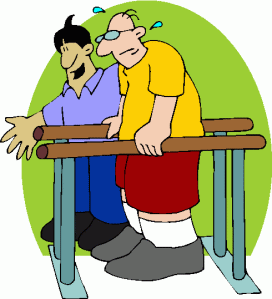A friend of mine was running the other day and caught a cramp in her leg. We were talking about her leg cramps, which turn out to happen quite often, and she asked me what exactly is a cramp and how she can avoid it in the future. I thought I’d share it with my readers!
When you exercise your muscles contract and then relax in quick succession. A cramp happens when your muscle contracts but does not relax, and becomes hardened. It may be difficult, once you have a cramp, to relax the muscle and pain may result.
Some causes of cramps include:
- Injury to the muscle: Muscles may spasm, and then cramp, around the site of an injury to stabilize the injury site.
- Nocturnal cramps: Small movements during the night of muscles causes shortening of the muscles which lead to cramps – which is why you may wake up in the middle of the night with a Charley Horse!
- Dehydration: Fluid loss during exercise causes the muscles to shorten up and tense up. Cramps in seniors may result from poor fluid intake.
Other causes for cramps can be found on the website provided below, but my friend’s reason was most likely from dehydration. For cramps caused during exercise, it is essential that you do a proper warm up and cool down and make sure you get plenty of fluids before, during and after your workout (also can be found on the website provided below). And make sure you stretch before and after your workout!
http://www.medicinenet.com/muscle_cramps/article.htm

